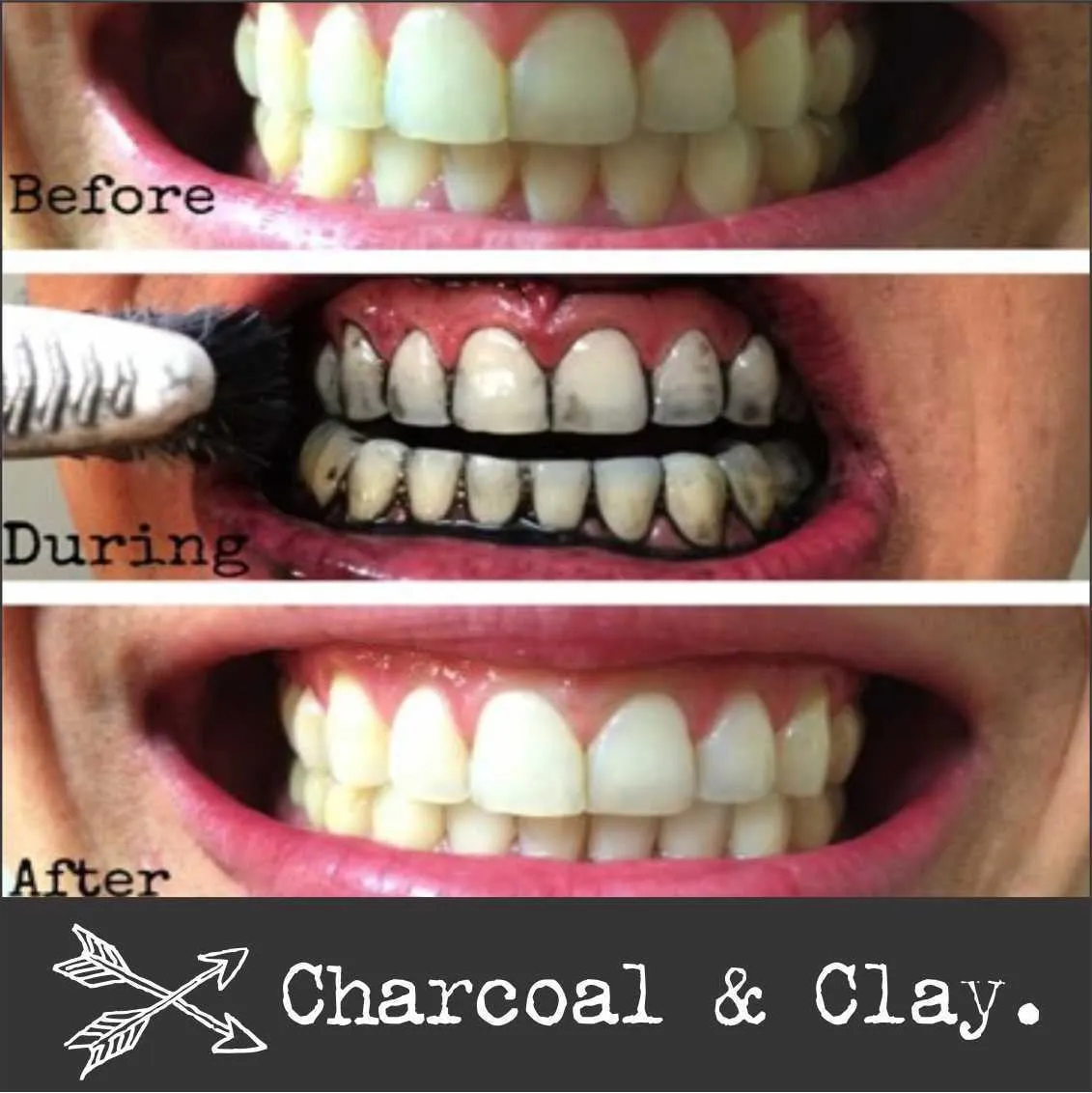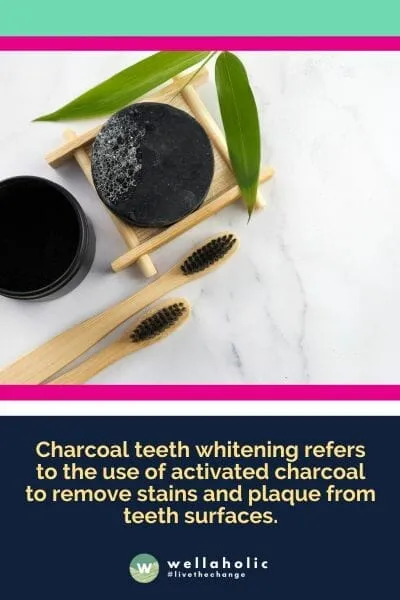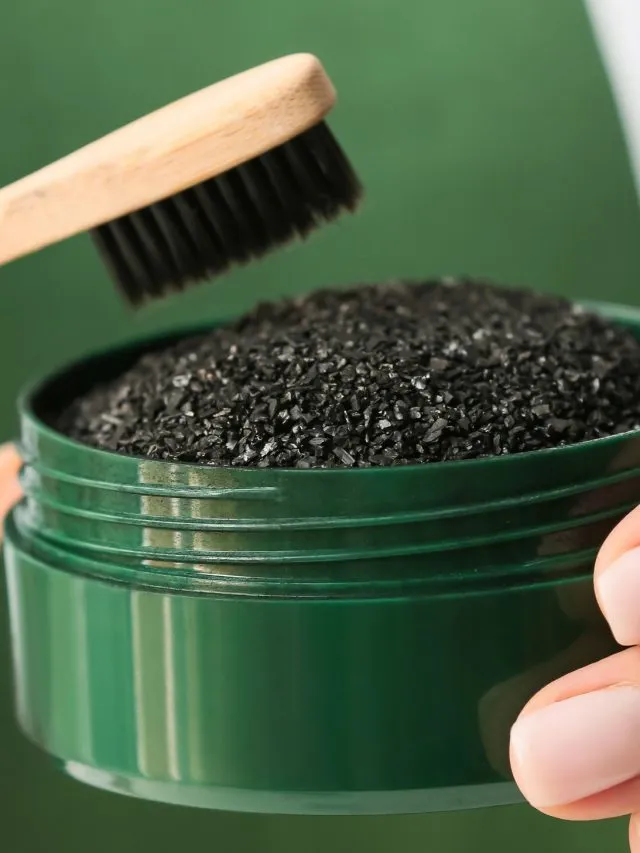What is Charcoal Teeth Whitening
Charcoal teeth whitening has surged in popularity as a natural method for achieving a brighter smile. But what exactly is it? It involves using activated charcoal, a fine black powder derived from sources like coconut shells, wood, or other organic materials. This charcoal is processed at high temperatures, which increases its porosity. This unique characteristic is key to its effectiveness in teeth whitening. Unlike regular charcoal used for grilling, activated charcoal is specifically treated to make it suitable for oral use. The premise behind charcoal teeth whitening is that the porous structure of activated charcoal helps to absorb stains and impurities from the surface of the teeth. This gentle abrasive action can remove stains caused by coffee, tea, wine, and other substances, revealing a whiter and brighter smile. It’s a method many people are turning to as an alternative to traditional chemical-based whitening treatments. However, it’s important to understand the science behind it, potential risks, and how to use it correctly.
The Science Behind Activated Charcoal
The efficacy of activated charcoal in teeth whitening stems from its unique properties. The high porosity of activated charcoal is what makes it effective. This means it has a large surface area relative to its size, allowing it to attract and trap various substances. In the context of teeth whitening, this means it can bind to stain molecules on the teeth’s surface. The process is primarily physical rather than chemical. Activated charcoal doesn’t chemically alter the tooth enamel. Instead, it acts like a mild abrasive, gently scrubbing away surface stains. This scrubbing action is crucial to the whitening process, but it’s also where potential risks come into play. The effectiveness also depends on the source of the activated charcoal and how it’s processed. It must be food-grade activated charcoal to be safe for oral use. Proper processing ensures it’s free from harmful chemicals and contaminants. Understanding this science helps us to appreciate both the potential and the limitations of this method.
How Charcoal Whitens Teeth

The method of charcoal teeth whitening relies on a few key processes. When you brush with activated charcoal, its porous structure helps to bind to stain particles. These particles are then gently removed from the tooth surface through the mechanical action of brushing. Common stains from coffee, tea, wine, and tobacco are effectively targeted by this method. However, it’s important to note that activated charcoal primarily works on surface stains. It does not alter the intrinsic color of the teeth. For deeper stains or discoloration, it may not be as effective as professional whitening treatments. The mild abrasive nature of charcoal is beneficial for stain removal, but it’s also critical to use a soft-bristled toothbrush and to apply gentle pressure. This is essential to avoid damaging the enamel. Regular use, combined with proper brushing technique, can contribute to a brighter and cleaner smile. However, realistic expectations are important, as results can vary depending on the type and severity of stains.
Charcoal Teeth Whitening Step by Step Guide
Using charcoal for teeth whitening involves a straightforward process. First, start by choosing a high-quality activated charcoal product suitable for oral use. These are often available in powder or toothpaste form. Wet your toothbrush and dip it into the charcoal powder, or apply the charcoal toothpaste. Brush your teeth gently, using small, circular motions for about two minutes. Make sure to cover all surfaces of your teeth. After brushing, rinse your mouth thoroughly with water. It’s common for the charcoal to leave a black residue, so repeat the rinsing process until your mouth is clear. Some people choose to follow up with their regular toothpaste to ensure all charcoal particles are removed and for added fresh breath. Remember to avoid swallowing the charcoal. For best results, it’s recommended to use charcoal teeth whitening once or twice a day, depending on your needs and sensitivity. Consistent use, combined with a good oral hygiene routine, can enhance the whitening effects.
Choosing the Right Charcoal Product
When selecting an activated charcoal product for teeth whitening, several factors should be considered. First and foremost, ensure the product is specifically designed for oral use. This means it’s food-grade and free from harmful additives. Check the source of the charcoal. Coconut shell charcoal is a popular choice because it is considered a sustainable and effective option. Read reviews and look for products that have a positive reputation. Consider the form of the charcoal. Powder is often more abrasive but can be more effective, while toothpaste is generally less messy and easier to use. However, the effectiveness can vary between different brands and formulations. Look for products that are free from artificial sweeteners, flavors, and colors. Some charcoal products may include additional ingredients like essential oils or minerals, which could have added benefits for oral health. Always follow the manufacturer’s instructions and consult with a dentist if you have any concerns or if you experience any adverse effects.
Brushing Technique for Optimal Whitening

The correct brushing technique is crucial for effective charcoal teeth whitening. Use a soft-bristled toothbrush to minimize the risk of enamel abrasion. Apply gentle pressure; avoid scrubbing vigorously, as this can damage the enamel and gums. Brush your teeth in small, circular motions, ensuring that you cover all surfaces of your teeth, including the front, back, and chewing surfaces. Brush for approximately two minutes. Pay special attention to areas with visible stains. Make sure the charcoal is evenly distributed across your teeth. After brushing, rinse your mouth thoroughly with water until the charcoal residue is completely removed. You can also use a regular toothpaste after the charcoal to ensure your mouth feels clean and fresh. Consistency is important for achieving the desired results. Regular brushing with the correct technique will not only enhance the whitening effect but also contribute to overall oral health. Remember to replace your toothbrush regularly, usually every three months or sooner if the bristles are frayed.
How Often Should You Use Charcoal
Determining how often to use charcoal teeth whitening depends on individual needs and oral health. Start by using it once a day to assess your teeth’s sensitivity and your results. If you experience no sensitivity and see a positive effect, you can gradually increase the frequency to twice a day. It’s important not to overuse charcoal, as excessive use can potentially lead to enamel erosion. Monitor your teeth for any signs of increased sensitivity or changes in enamel. If you notice any negative effects, reduce the frequency or discontinue use. Many users find that using charcoal a few times a week provides the best balance between whitening and maintaining oral health. Consider your diet and lifestyle; if you consume a lot of staining foods or drinks, you may need to use charcoal more frequently. Always consult with a dentist if you have any concerns or questions about the appropriate frequency for your specific situation.
Potential Risks and Side Effects
While charcoal teeth whitening can be effective, it’s essential to be aware of the potential risks and side effects. The primary concern is enamel abrasion. Charcoal is abrasive, and excessive or improper brushing can wear down the enamel, making teeth more susceptible to cavities and sensitivity. Overuse can also lead to increased tooth sensitivity. If you experience sensitivity, reduce the frequency of use or stop using charcoal altogether. Some individuals may experience gum irritation or inflammation. If this occurs, it’s important to reassess your brushing technique and pressure. The effectiveness of charcoal may also vary depending on the type and severity of stains. It might not be as effective for intrinsic stains or deeper discoloration. It’s crucial to practice caution and consult with a dentist. A dental professional can provide personalized advice based on your specific oral health condition.
Sensitivity and Irritation

Sensitivity and irritation are potential side effects to watch out for when using charcoal teeth whitening. Increased tooth sensitivity can occur due to enamel abrasion. If you notice your teeth becoming more sensitive to hot or cold foods and drinks, it’s a sign that the enamel is wearing down. Reduce the frequency of use or switch to a less abrasive product. Gum irritation or inflammation may also arise, especially if you brush too aggressively. Make sure to use a soft-bristled toothbrush and brush gently. If your gums become red, swollen, or bleed, stop using charcoal immediately and consult your dentist. Pay close attention to any changes in your oral health. If you have existing dental issues, such as cavities or receding gums, consult your dentist before using charcoal. They can advise whether it is a suitable option for you and monitor your oral health during the whitening process.
Long Term Effects and Dental Health
The long-term effects of charcoal teeth whitening are still being studied. However, excessive and improper use can potentially lead to several dental health issues. Enamel erosion, as mentioned, is a significant concern. Over time, this can weaken your teeth and increase the risk of cavities and other dental problems. The abrasive nature of charcoal can also contribute to gum recession. This can expose the roots of your teeth, making them more sensitive and prone to decay. It’s essential to maintain a balanced approach. Use charcoal whitening sparingly and always in conjunction with a comprehensive oral hygiene routine, including regular brushing with fluoride toothpaste and flossing. Regular dental checkups are vital. Your dentist can monitor the health of your teeth and gums. They can also identify any potential issues early on, mitigating any long-term damage. Always consult with a dentist if you have any concerns or notice any changes in your dental health.
Alternative Teeth Whitening Methods
If you’re looking for alternatives to charcoal teeth whitening, several options are available. Over-the-counter whitening products, such as whitening strips and trays, are readily accessible. These usually contain a lower concentration of hydrogen peroxide or other bleaching agents. They can be effective for surface stains. For more significant whitening results, consider professional teeth whitening. Dentists offer in-office treatments, which use a higher concentration of bleaching agents. They can also provide custom-fitted trays for at-home whitening. Another alternative is using whitening toothpaste. Many brands include mild abrasives and whitening agents to remove stains. For those seeking natural options, certain foods, such as strawberries and apples, may help remove surface stains. However, their whitening effects are typically limited. Before trying any new whitening method, consult with your dentist. They can recommend the best option for your specific needs and oral health condition. They can also provide guidance on achieving a brighter and healthier smile safely and effectively.
